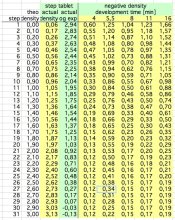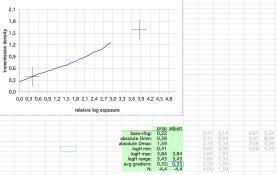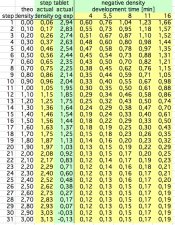qualsound
Member
- Joined
- Mar 2, 2011
- Messages
- 25
- Format
- Medium Format
It's better science to eliminate variables from testing. Flare is a variable that can easily be eliminated from the experiment by placing the Stouffer scale in contact. But I didn't come here to harp on that.
Bill!
i tried to follow your advice and take a photgraph of the stouffer by putting it right before the film plane into the filmback. i used a 150mm lens focused at infinity...
into the filter holder of the kompendium i slid a transparent piece of paper (used for graphic illustrations, etc.) exposing the film during yesterdays cloudy sky 5 stops more than the lightmeter suggested. i developed for 5,5 minutes.
Please check the results,...i don't know what happened...it look like i got so much flare...or is it a light leak inside the filmback/camera???
because even the unexposed but developed part of the film has a density of 0.15
...considering that it could be that around 1/2 stop of fogging caused by a lightleak (or whatever??) damaged and will be damaging all of my filmtests...
please correct me if i am wrong: measuring step nr. 1 on the original stouffer tablet is 0.06 + 0.15 flare/lightleak/whatever equals 0.21!!! so around the actual 0.22 (step 31) of yesterday's contacted stouffer on the hp5.
i am pretty confused...








